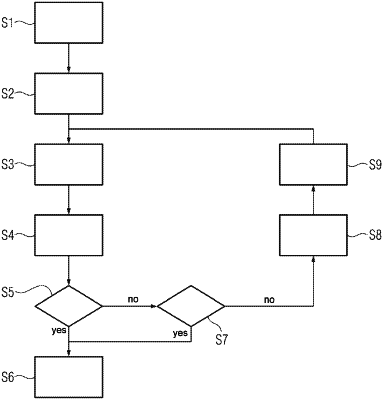| CPC G02C 7/027 (2013.01) [G02C 7/068 (2013.01); G02C 13/005 (2013.01)] | 11 Claims |

|
1. A computer-implemented method for fitting a spectacle lens having a first spectacle lens surface, a second spectacle lens surface, and at least one intended dioptric power to a spectacle frame having a predetermined frame edge curve, the method comprising:
fitting a free-form surface formed on the first spectacle lens surface to the frame edge curve of the spectacle frame,
wherein the free-form surface is fitted to the frame edge curve by simultaneously optimizing the free-form surface and the second spectacle lens surface with regard to minimizing a difference between the free-form surface edge curve and the frame edge curve and with regard to attaining the at least one intended dioptric power of the spectacle lens, the free-form surface and the second spectacle lens surface mutually influencing one another during the optimization,
wherein the simultaneous optimization of the free-form surface and the second spectacle lens surface is implemented iteratively, the second spectacle lens surface being altered first in each iteration step and the free-form surface then being optimized with regard to attaining the at least one intended dioptric power of the spectacle lens,
wherein in each iteration step the optimization of the free-form surface is followed by a determination of a measure for a deviation of the free-form surface edge curve present after the optimization of the free-form surface from the frame edge curve; and
terminating the method if the measure for the deviation is less than a given value or a change in the measure is less than a given value, or, otherwise, in a subsequent iteration step:
modifying the second spectacle lens surface; and
subsequently optimizing the free-form surface again with regard to attaining the at least one intended dioptric power of the spectacle lens.
|